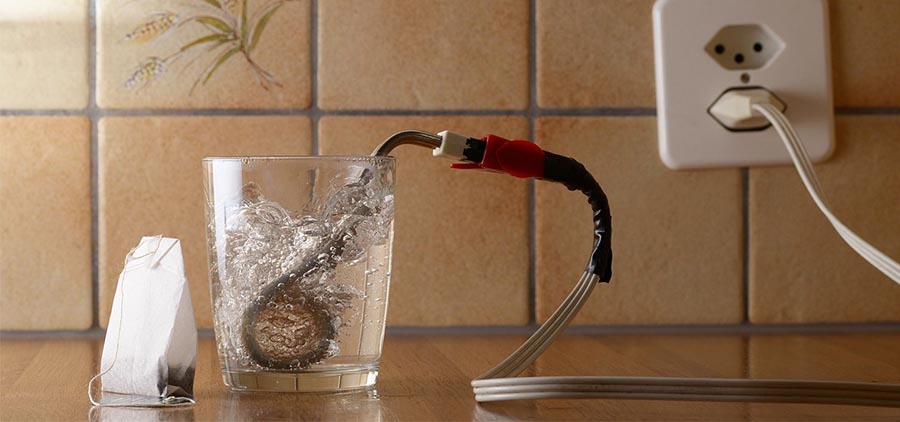How does an immersion heater work?
Most of the hot water used in homes in the UK is heated with an immersion heater, which is a type of electric water heater.
As this type of heater is housed inside a water tank it’s not easy to see how it works.
We thought we’d demystify the process.
Think kettle!
A good way to picture how immersion heaters work, is to think of the hot water tank and immersion heater as a big kettle. Like a kettle, the water is heated up from the inside, usually with electricity. A strong electric current, runs through a large element inside the tank to directly heat the water around it. Unlike a kettle, the immersion heater, usually rated at 3kw, is wired into the mains via an isolating switch.
The immersion heater is fitted with a thermostatic control, which ensures the element is cut off if the water gets too hot. The sensor will switch the heater back on again, when the temperature of the water falls below a certain level.
If you’re going to set the temperature, make sure it’s not lower than 50 degrees Celcius so that it is able to kill bacteria, such as Legionella, that may be living in the water.
And here’s the science
As the hot water rises, a convection current forms and the heated water collects at the top of the tank. The cold water supply, which feeds in at the bottom of the tank, increases the pressure inside, moving the hot water up even further so that it is pushed out through pipes at the top of the cylinder to feed the bath, shower or basin whenever it’s needed.
The immersion water heater works separately to the central heating and hot water system, typically powered by a gas boiler. Some people use immersion heaters as the main source of hot water in their homes, others like to have one as part of a back-up system, ensuring there will be hot water even if their boiler breaks down
Are immersion heaters expensive to run?
They can be, but there are measures you can take to ensure that costs are kept to a minimum. The water tank should be lagged with an efficient layer of insulation to ensure that heat produced isn’t lost. With modern insulation it’s possible to keep the water in the tank warm for many hours a day, even if it’s heated during the night.
If you’re interested in saving money you can also set a timer to heat the water during off-peak hours when electricity tariffs are at their lowest, rather thank leaving the immersion heater running all day.
Although most immersion heaters are powered by electricity, it is possible to wire them up to solar panels or another renewable energy source to help reduce costs.
If this has whet your appetite and you want to learn more, a number of our plumbing courses will show you how to install and maintain an immersion heater.
To find out more, please get in touch or click here for more details.









